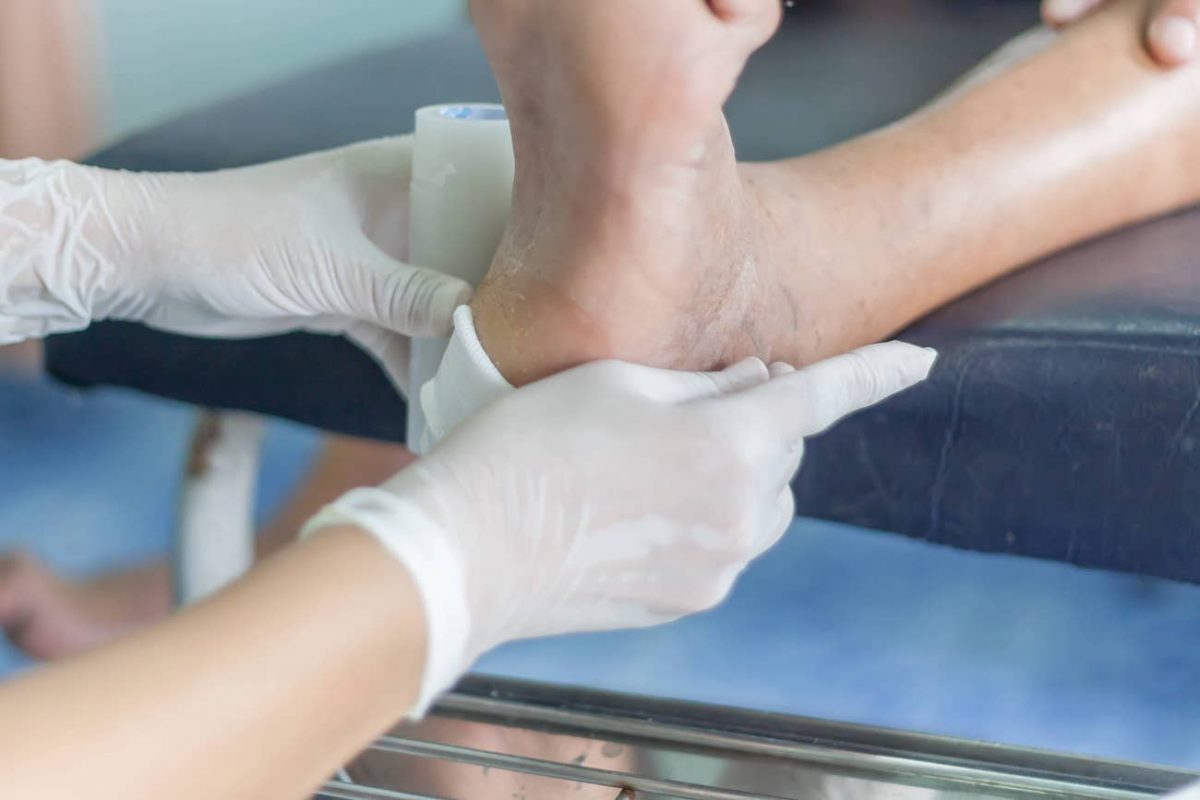
Every day, tens of millions of Americans face the challenge of managing and living with diabetes. This is no small task.
Monitoring and controlling blood sugar levels and other aspects of the condition require a lot of work.
Those who can’t or don’t have a good handle on their diabetes put themselves at risk for severe and tragic consequences.
Diabetes leaves the body vulnerable to a host of other serious health issues, including potentially catastrophic foot problems.
The damage that diabetes can do to your feet can ultimately necessitate amputation or even be deadly.
During the colder temperatures of winter, even in South Florida where our practice is based, those with diabetes need to be even more vigilant and aggressive in protecting their feet from potential complications of the condition.
How Does Diabetes Put Your Feet At Risk?
Diabetes restricts blood flow to the legs and feet, which makes it harder for the body to heal any foot injuries.
During cold weather, the lack of blood flow to the extremities can also ultimately lead to frostbite.
The nerve damage that diabetes often causes can lead to the inability to feel pain, which is how our bodies typically alert us to problems.
In turn, this may keep a person with diabetes from realizing they have developed a foot ulcer, infection, fungus, or other issues.
As such, if someone with diabetes has a foot condition that needs immediate medical attention, they may not realize it or seek treatment until well after it becomes severe.
Without Care, Amputation Is a Very Real Possibility
Diabetic foot problems can become so extreme that the only effective treatment is amputation.
About 73,000 adult diabetics had a foot or leg amputated in 2010 alone, according to the Centers for Disease Control and Prevention.
People with diabetes 45 years old and up are ten times more likely to have a foot or leg amputated than people of the same age without diabetes.
Preventing Diabetic Foot Problems
As scary as those possibilities are, the good news is that people living with diabetes can take some simple and common-sense steps to significantly reduce the likelihood of developing diabetes-associated foot ailments.
The number one thing you can do to prevent diabetic foot problems is to carefully inspect your feet every single day.
Look closely at the top and bottom of each foot, and check between your toes using a magnifying glass or mirror if you need to.
Keep your eyes peeled for crack, cuts, blisters, redness, nail discoloration, or swelling. If you see any such problems, set up an appointment with your podiatrist as soon as you can.
If you have diabetes, make the following habits part of your foot care regimen as well:
- Wash your feet every day with mild soap and lukewarm water, paying particular attention to the areas between your toes. Make sure to dry your feet and toes thoroughly and use talcum powder to keep them dry.
- Stop smoking
- Wear clean, dry socks at all times, including to bed if your feet get cold at night
- Wear shoes that do not cause friction or irritation
- Add these diabetes superfoods to your diet
- Keep the blood flowing to your feet by elevating them when sitting, wiggling your toes and moving your ankles up and down at various times throughout the day
- See a podiatrist at least once every year for a complete foot examination
JAWS Podiatry – Your Partners in Diabetic Foot Health
The experienced and skilled podiatrists at JAWS Podiatry in Hollywood, Florida can help individuals with diabetes keep their feet healthy and address problems should they arise.
Our exceptional foot and ankle specialists and friendly staff welcome the opportunity to provide you with the highest degree of care in our welcoming, comfortable offices.
Please don’t hesitate to send us a message or contact us today at (954) 922-7333 to schedule a consultation.
- The Life-Changing Power of Cosmetic Foot Surgery - February 27, 2023
- What Are The Most Common Pediatric Foot Conditions? - October 5, 2020
- 4 Important Things To Know Before Having Foot Surgery - September 21, 2020



